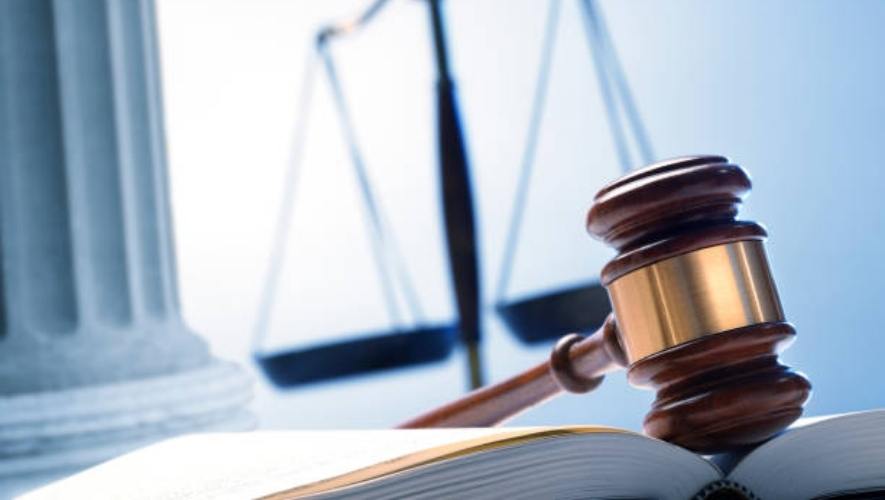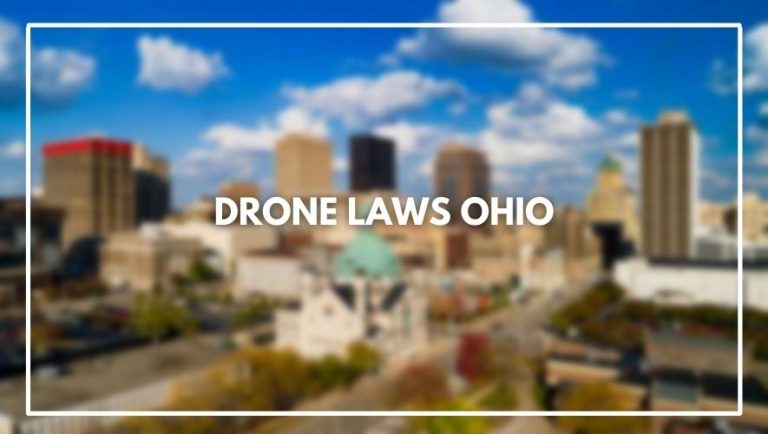Welcome to the Discovery of tech – the number one community for drone flyers. On this page you’ll find everything you need to know about drone laws nova scotia. Below is a great infographic that explains how drone laws nova scotia work.
In Canada, the Federal Government’s regulations regarding drones are found under the Canadian Aviation Regulations. These can be viewed at the following site. drone laws nova scotia is provided on the site to help people understand those regulations.
Drone Laws Nova Scotia

Flying A Drone In Nova Scotia
The regulations governing the use of drones are outlined in the Nova Scotia Drone Operating Regulations. These rules apply to all drones, including commercial operations, used by hobbyists and professional photographers alike. The regulations require that you:
- Keep your drone in sight and fly it below 90 metres in altitude or higher if it is within 75 metres of a structure.
- Not fly a drone over people who are not directly involved with its operation (for example, bystanders).
- Not fly above an open-air assembly of more than 1,000 people except with written permission from Transport Canada (source).
All Pilots Must Follow The Rules Set Out By Transport Canada
While the use of drones is growing and their price is coming down, all pilots must follow the rules set out by Transport Canada.
Drones are regulated by Transport Canada and must be registered. All drones over 35 kilograms must be marked with a serial number as well.
What Are Those Rules?
- Keep your drone in sight at all times.
- Fly no higher than 90 metres and no closer than 9 kilometres from an airport, heliport, aerodrome, or water drome where aircraft take-off and land.
- Don’t fly within 75 metres of a structure that is not under your control (such as a building or other man-made object).
You Must Keep Your Drone In Sight
- You must keep your drone in sight and fly it below 90 metres in altitude or higher if it is within 75 metres of a structure.
- Do not use your drone for any commercial or business purpose except for the following:
- Flying a model aircraft for sport or recreation (e.g., flying models, remote control airplanes and helicopters)
- Aerial photography under two conditions: 1) The take-off, flight path, and landing locations are all within 9 kilometres of the operator; 2) The owner has given written consent to fly over private property.
You May Not Fly Your Drone Closer Than 9 Kilometres From An Airport
You must keep the drone in sight at all times. You may not fly your drone closer than 9 kilometres from an airport, heliport, aerodrome, or water drome where aircraft take-off and land. You must fly below 90 metres in altitude.
Drones Must Be Registered And Marked With A Registration Number.
You must:
- register your drone with the federal government. The registration number must be displayed on the drone.
- write the registration number on your drone.
- register with Nova Scotia, which can be done online or by calling 1-844-333-0581 (toll free).
Drones Over 35 Kilograms Must Be Marked With Serial Number.
Drones over 35 kilograms must be marked with a serial number.
If your drone weighs less than 250 grams (0.55 pounds), you don’t need a serial number, but you do need to register it with Transport Canada.
However, if your drone weighs more than 250 grams and up to 1 kilogram (2.2 pounds), then you don’t need a registration number but must have one anyway—unless it has no commercial use and is used “solely for private recreation or hobbies without being operated near any person or aircraft.”
If your drone weighs more than 1 kilogram but less than 2 kilograms (4.4 pounds), then you must register the device within seven days of its first flight; otherwise, penalties can apply later on down the line if someone reports their property damaged by an uncertified drone operator who didn’t bother to get their paperwork done before they started flying their expensive gadget around town.
Drones Can Be A Lot Of Fun But Need To Be Flown Safely And Legally.
Drones Can Be A Lot Of Fun But Need To Be Flown Safely And Legally. Drones are not toys, they are powerful machines with the ability to lift heavy objects and hurt people or damage property. If you have a drone, you need to make sure that it is safe, legal and flown by an adult.
Drones are often used for work purposes such as inspecting roofs or pipelines, shooting video footage for movies or television shows, helping farmers monitor their livestock and crops, monitoring traffic on roads and bridges.
When flying your drone in Nova Scotia you must:
- Have permission from the owner/operator of the property where you want to fly your drone;
- Keep your drone away from people not associated with its operation;
- Not fly higher than 90 metres above ground level (AGL);
- Not fly closer than 30 metres from buildings or vehicles without specific permission from building owners;
- Stay away from emergency responders (police helicopters etc.) when using drones for recreational purposes;
How To Register Drone In Nova Scotia

Drone Operators Must Be 14 Years Of Age Or Older.
- There are no age restrictions on drone operators in Nova Scotia, but you must be 14 years of age or older.
- If you’re younger than 14, you can still operate a drone if your parent or guardian is riding with you and they hold the Remote Pilot Certificate (RPC).
All Recreational Drone Users Must Follow Transport Canada Rules
All Recreational Drone Users Must Follow Transport Canada Rules for operating safe and responsible.
- You are required to see your drone at all times.
- You cannot fly higher than 400 feet above the ground, or further than 1.8 kilometres away from you.
- You cannot fly within 5.6 kilometres of an airport or heliport without notifying the airport operator and air traffic control tower first by phone or email.
- And never fly near people, animals or buildings; always keep a clear view of your drone; never fly in clouds; and never fly near aircraft (including helicopters).
Drones 25 Kilograms Or Less Are Considered To Be Recreational Drones.
If your drone weighs 25 kilograms or less, it’s considered to be a recreational drone. The weight limit is for drones that are operated for recreational purposes. If you’re flying your drone for commercial purposes, then you need to register your drone at nova-scotia.ca/drone-registration.
When registering your recreational drone with Transport Canada, there are some things that need to be done first:
Drones That Are 250 Grams Or Less
Drones That Are 250 Grams Or Less do not need to be registered if they will only be flown indoors. However, any drone weighing more than 250 grams must be registered even if it is being flown indoors or outdoors.
Drone That Weighs Between 250 Grams And 1 Kilogram Must Display The Operator’s Name
You must register your drone with the Canadian government before flying it. This is called the Aeronautical Information Publication (AIP). The AIP is a publication provided by NAV CANADA, which provides information about airspace and aircraft movements.
You can also register your drone with the Nova Scotia government, but this does not require an operator’s certificate from Transport Canada. If you’d like to fly your drone in Nova Scotia, it will need to be registered with both governments: Transport Canada and Nova Scotia’s Civil Aviation Authority (CAA).
All Recreational Drones That Weigh More Than 1 Kilogram Are Required To Be Registered
A recreational drone is any drone that weighs less than 35 kilograms. If you want to fly a drone larger than this, it is considered a commercial drone.
You’ll need the following information:
- Name and address of the registered owner (you)
- Telephone number where you can be reached during business hours, so we can contact you if there are any questions about your application or registration certificate(s)
- Email address for correspondence, if different from above
Registering A Drone Is A Good Idea
Registering your drone is a good idea. It helps owners find lost or stolen drones, identify the owner of a drone involved in an accident, or identify the owner of a drone involved in a crime.
Registering your drone also makes you eligible for certain benefits and discounts from various businesses around Nova Scotia.
Are Drones Allowed In Nova Scotia
Nova Scotia Has Rules For Flying Recreational Drones.
You are not alone in your love of drones. The world is full of people who feel the same way you do, but they’re not all as careful or as wise. That’s why there are rules for flying recreational drones in Nova Scotia and all over the world.
The rules for flying recreational drones in Nova Scotia are not that different from other places in Canada, but there are some small differences worth knowing about. And if you want to know more about what can happen if you break these rules, we’ve got information on that too!
Get Permission From Transport Canada If You Want To Fly For Any Other Reason.
If you want to fly for any other reason, such as commercial use or research, you need to get permission from Transport Canada.
This means that you need to have a Special Flight Operations Certificate and your drone must be registered with them. Your registration number should be marked on the drone itself, so that it’s visible at all times.
It’s important to note that drones should not be damaged in any way when they’re being used—even if they’re just sitting around and waiting for their next adventure.
If a drone has been disassembled or tampered with in any way (and even if it doesn’t look like it has), then this can affect its ability to fly safely and legally.”
Drones Are Not Allowed In National Parks
Drones are not allowed in national parks, wildlife refuges and other protected areas. Drones also cannot be flown within 9 kilometers (5.6 miles) of a forest fire or any emergency operation involving a forest fire.
The Nova Scotia Department of Natural Resources is responsible for enforcing the regulations on drone use in Nova Scotia. The department has an online form that you can fill out if you have seen someone flying a drone where they shouldn’t have been flying it (i.e., over protected areas).
A Drone Cannot Fly More Than 90 Metres Above The Ground
To fly your drone in Nova Scotia, you need to take into account the laws of Canada.
The Civil Aviation Act prohibits anyone from operating an aircraft without the proper license or training. If you don’t have a license or training, then it is illegal to operate any kind of aircraft, including drones.
This means that if you want to fly your drone in Nova Scotia, then you need to have both a pilot’s license and permission from Transport Canada (the federal government agency responsible for regulating aviation).
A Drone Must Always Be Within Your Line Of Sight
- The drone must always be within your line of sight.
- You must be able to see your drone at all times, including when it is flying.
- If possible, try using a video monitor or live stream to watch the video feed from your drone’s camera. This will help ensure that you know exactly what the drone is doing at any given time and provide you with more control over its position and movement.
The Rules Are Complicated But They Can Be Navigated
You’ll be happy to know that the rules for flying drones in Nova Scotia are complicated but they can be navigated by anyone who wants to fly a drone.
The rules are in place to protect people, property and wildlife from damage by drones, as well as keeping them safe and secure.
Frequently Asked Question (drone Laws Nova Scotia)
How Far Can I Fly My Drone?
- According to Nova Scotia’s Civil Aviation Regulations, you can fly your drone up to 400 feet above the ground. This is a maximum altitude limit and does not mean that you cannot fly higher than that; it simply means that if you do so, you are required by law to have an operational transponder on board (a device which transmits your position in the air).
- The minimum distance from buildings, people, animals and vehicles is 100 metres in all directions from where your drone is flying. If you want to get closer for any reason (such as taking photos), please contact Transport Canada and seek permission first.
What Are The No-fly Zones?
- NO-FLY ZONES: The Transport Canada Civil Aviation has created a regulation that prohibits drone operators from flying in or over any of the no-fly zones outlined below. These areas are off limits for safety reasons and include airports, military bases, prisons, etc…
- National Parks: Parks Canada has created an official list of national parks where you cannot fly drones at all. Even though these are public lands used by many people each year, they are still considered sensitive areas for conservation of wildlife and ecosystems. Because of this it is important that you respect these rules by not flying your drone too close to these listed places.
- Wildlife Refuges: Wildlife refuges exist across Canada and here again we see another area where drones should not be flown because they could disturb or even scare away animals living on those sites.* Conservation Areas: Conservation areas also exist across Canada but here again we see another area where drones should not be flown because they could disturb or even scare away animals living on those sites
Do I Need A Permit To Fly My Drone In Nova Scotia?
If you’ll be flying your drone in Nova Scotia, it’s important to know that you need a permit. You can apply for this permit through the Civil Aviation Directorate’s Permits and Licences page.
Your drone must weigh less than 35 pounds, so if it doesn’t, then you’ll have to pay an additional fee of $20 per pound over 35 pounds. If your drone weighs 30 pounds or less, the standard fee is $50 CAD.
You will also need proof of ownership of the aircraft – either by providing an invoice or receipt from when they were purchased – as well as proof of citizenship with a passport or birth certificate.
Can I Fly Over People, Cars Or Buildings?
Yes, as long as you are at least 7.5 meters (25 feet) above the ground and 150 meters (500 feet) away from vehicles, vessels, or the public. You must also be at least 150 meters (500 feet) away from people while flying over a city or town.
Can I Make Money As A Drone Pilot?
Yes, you can make money as a drone pilot. The more you practice, the better you will get at flying your drone. You can get paid for creating videos and photos with your drone. You can also get paid for flying people around in their own drones or by charging them to take pictures of them on their own drones.
Conclusion
If you’re looking for a place to fly your drone, Nova Scotia is the perfect location. While there are some drone laws Nova Scotia on where drones can be flown in Nova Scotia, most of these restrictions are for areas that are protected and/or sensitive to wildlife. For example, drones are not permitted within national parks, wildlife refuges or other protected areas.
If you want to use your drone for any other reason than personal pleasure—such as commercial purposes or research purposes—you must first apply for permission from Transport Canada (TC). However, if your application is denied by TC due to safety concerns, then you will need to get approval from the National Research Council (NRC).

![Drone Laws Colorado [March 2023] [Rules & How to Register]](https://discoveryoftech.com/wp-content/uploads/2022/08/drones-74-768x434.jpg)

![Drone laws National Parks [March 2023] [Rules & How to Register]](https://discoveryoftech.com/wp-content/uploads/2022/05/drone-70-768x434.jpg)
![Drone Laws London [March 2023] [Rules & How to Register]](https://discoveryoftech.com/wp-content/uploads/2022/08/drone-11-768x434.jpg)
![Drone Laws San Diego [Updated: March 17, 2023]](https://discoveryoftech.com/wp-content/uploads/2022/08/drone-48-768x434.jpg)
